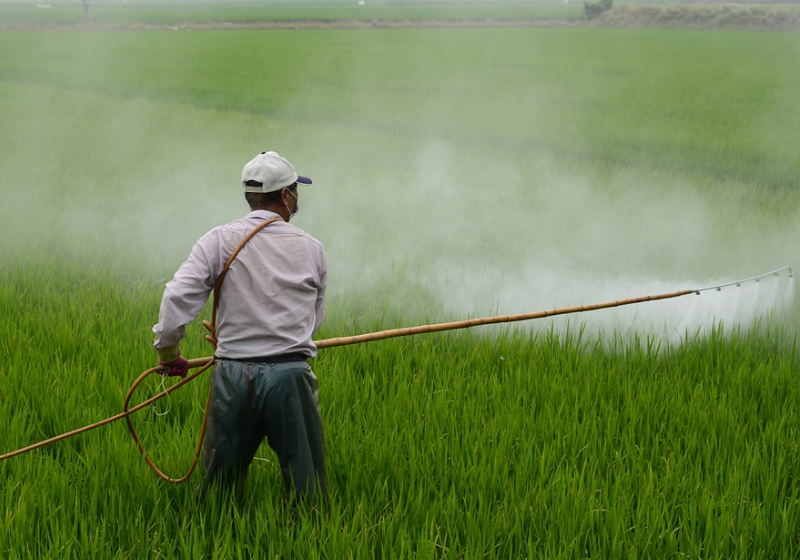Pesticide Wastewater Introduction
Pesticide wastewater refers to the wastewater discharge in the process of pesticide production. The quality and quantity of wastewater are unstable.
It is mainly divided into: benzene containing wastewater, organic phosphorus containing wastewater, high concentration salt containing wastewater, high concentration phenol containing wastewater, and mercury containing wastewater.
- Benzene Containing Wastewater: Distillation and adsorption of coal gangue and slag can be used for treatment.
- Organic Phosphorus Containing Wastewater: Materials such as dimethoate, methanol, and dimethylamine in the wastewater can be recovered by extraction or distillation methods, and then harmless treatment can be conducted by biological methods.
- High Concentration Sslt Containing Wastewater : Treated by concentrated incineration or wet oxidation.
- High Concentration Phenol Containing Wastewater: First recover phenol by extraction to make the content less than 300 mg/L, and then conduct biochemical or chemical oxidation treatment after appropriate treatment.
- Mercury Containing Wastewater: The wastewater is acidic, and the compounds are dissolved, which can be used for sulfide precipitation treatment.
In recent years, reverse osmosis and activated carbon biofilm methods have also been used to treat pesticide wastewater. Some countries have banned the use of organochlorine and organomercury pesticides such as HCH, and actively researching microbial pesticides is the fundamental way to prevent pesticide pollution.
Pesticide Wastewater Characteristics
- The concentration of pollutants is high, with COD (chemical oxygen demand) reaching tens of thousands of milligrams per liter.
- It is highly toxic. In addition to pesticides and intermediates, wastewater also contains toxic substances such as phenol, arsenic, mercury, and many substances that are difficult to degrade by organisms.
- Has a foul odor and is irritating to the respiratory tract and mucous membranes of humans.
- The water quality and quantity are unstable.
Therefore, the pollution of pesticide wastewater to the environment is very serious.
Pesticide Wastewater Treatment Method
Biological Method
A large number of studies have shown that microorganisms such as fungi, bacteria, and algae have good degradation effects on pesticides.
The biofilm method fixes microbial cells on the filler, and the microorganisms adhere to the filler to grow and reproduce, forming a membrane like biological sludge on it. Compared with conventional activated sludge processes, biofilms have advantages such as high biological volume concentration, long survival time, and a wide variety of microorganisms, especially suitable for the application of special bacteria in wastewater systems.
Electrolytic Method
Iron carbon micro electrolysis method is the result of multiple comprehensive effects such as flocculation, adsorption, bridging, sweeping, co precipitation, electrodeposition, and electrochemical reduction, which can effectively remove pollutants and improve the biodegradability of wastewater.
The newly generated iron surface and a large number of primary Fe 2+and atomic H generated in the reaction have high chemical activity, which can change the structure and characteristics of many organic substances in wastewater, causing chain breaking and ring opening of organic substances.
The electric field effect around the electrode of a micro battery can also cause charged ions and colloids in the solution to collect and deposit on the electrode to remove them.
In addition, the Fe2+, Fe3+and their hydrates produced by the reaction have strong adsorption and flocculation activities, which can further improve the treatment effect.
Oxidation Method
Deep oxidation technologies (AOPs) can generate · OH with high oxidation activity through the combination of oxidants, and are considered to be the best technology for treating refractory organic pollutants. The introduction of the combined action of ultraviolet light and hydrogen peroxide and the regulation of the pH of the reaction system can further improve the efficiency of the ozone deep oxidation process.
Catalytic wet air oxidation can achieve efficient degradation of organic pollutants, while greatly reducing the temperature and pressure of the reaction, providing an efficient new technology for the treatment of highly concentrated and difficult to biodegradable organic wastewater.
Visit www.evuchina.com for more informations!

#QDEVU #WATERTREATMENT #WASTEWATERTREATMENT #SEWAGETREATMENT #SEWAGEWATERTREATMENT #WATERFILTER #WATERFILTRATION #SLUDGETREATMENT #SLUDGEDEWATERING


